This journal is brought to you by…
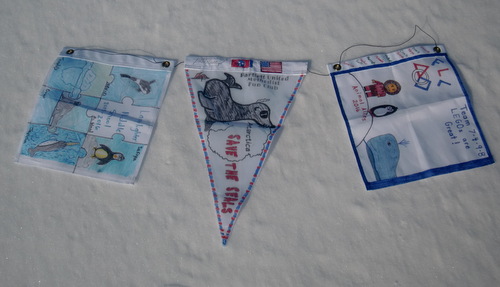
- Kelli Ward and her middle school students at Lamplighter Montessori School
- Bartlett United Methodist ‘Fun club’
- Ms. Jamie Ford’s 5th, 6th, and 7th grade students from NASA IV & V at the Education Resource Center
Let’s observe the whiskers on this seal. Describe what you see?
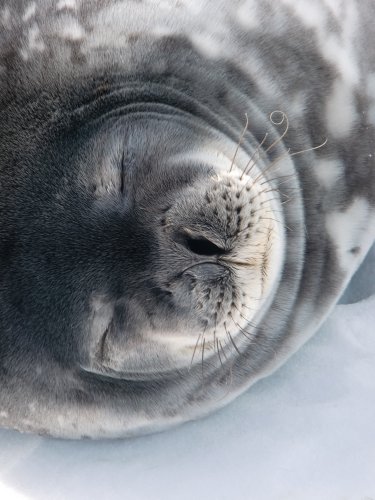
From this picture you can make a lot of observations about whiskers such as: color, location, number, length, organization and thickness. What do you notice?
Here’s some of what I see:
* Color - Black or dark brown
* Location – On the tip of the snout – around the mouth and nose region. But wait… did you also notice the whiskers above the eyes – there are a few up there as well!
* Number – How many do you count? Don't forget the ones above the eye. Hint: Each whisker comes from one follicle, so if you can’t tell if there is a whisker, look for a follicle!
* Length – Notice the difference in length between the whiskers nearest the tip of the snout and those furthest from the snout. The lengths we've been measuring range between 6.5 cm and 11 cm – and we are taking 1 or 2 of the longest whiskers.
* Organization – They are in a straight line and about the same distance apart. Wow!
* Thickness – All the whiskers appear thicker than the surrounding hair. The thickest whiskers are the longest and furthest from the snout.
* Unique features – Some whiskers are curled on the ends, although this just happens in some cases; many seals have whiskers that are all straight. If you look closely you can also see that the whisker has little bumps on it. These bumps help the seal sense vibrations from fish swimming through the water!
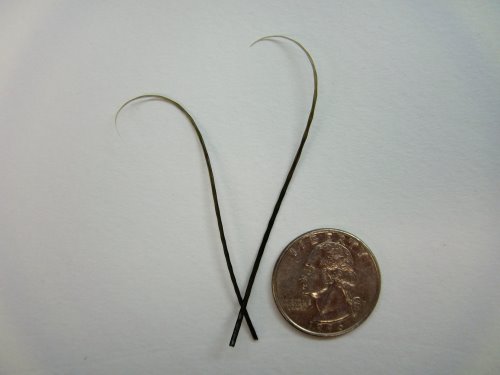
Did you notice anything else?
Whiskers are impressive!
Whiskers – or vibrissae – are very important sensory organs. Each whisker has many sensitive nerve fibers that can detect the slightest movements in the water. This sensitivity helps the seal:
1. To find food
2. To sense water movement
Using its whiskers, a seal can detect the slightest vibrations in the water from passing prey, which makes this sense very handy when foraging for food. In the dark depths of the ocean during the long dark winter months, Weddell seals can rely on this additional sense to detect water motion even when it is too dark to see the prey. So, having these specialized vibrissae, or whiskers, is kind of like having an extra set of eyes or an additional sense of touch. What do you think it would be like if we had this extra sense?
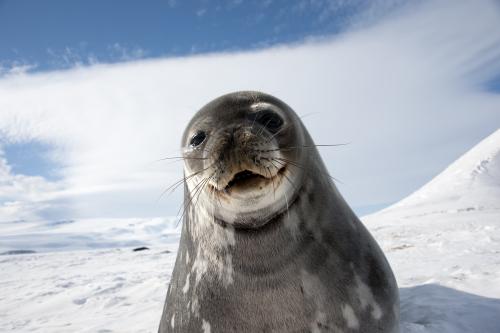
What can we learn from whiskers?
You can learn a lot from a seal’s whiskers just by looking at the position of the whiskers – really! Just like cats and dogs, the whiskers are close to the body when the seal is relaxed. But, if the whiskers are stiff and pointing outward – something has caught the seal’s attention. The seal may need to be ready to pounce on some lunch or protect its territory. Weddell seals mostly use their whiskers in the water – when they are hunting. When they are on land, their whiskers are mostly relaxed, so I haven’t gotten to see much whisker action down here!
Check out this video from Dr. Terrie Williams to see for yourself: http:// Video Credit: Terrie M. Williams, In the Chill of the Night
Dive Deeper!
From the scientist, Dr. Burns:
Weddell seals, as well as many other pinnipeds, have three different types of whiskers:
* Mystacial whiskers are located on the snout.
* Rhinal whiskers are located near the nose.
* Supraorbital whiskers are located over the eyes.
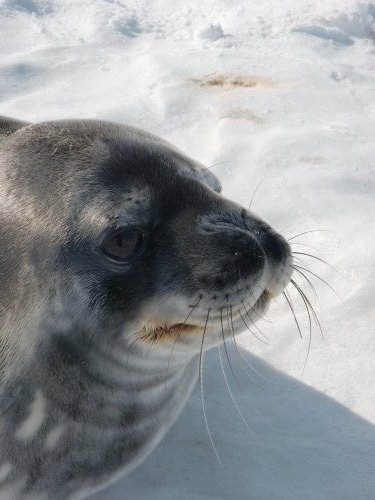
Whiskers grow and are shed just like hair. In some species, whiskers are shed each year (not all at the same time!), but in others they grow for several years. We think that Weddell seal whiskers are shed once per year, but we aren’t sure. As the whiskers are growing, they are incorporating isotopes and molecules from their diet, and we are collecting whiskers to look at changes in diet over time. Since whiskers take longer to grow out than hair, the diet record in the whisker covers a longer time period – with the signature at the base representing what was eaten most recently, and that at the tip the longest ago. That is why we try to take the longest whisker – but only one from each side – we don’t want to cause the seal any problems finding its prey in the dark! In order to figure out how fast the whiskers grow, we can measure the whisker that grows in to replace the whisker we took!


Comments